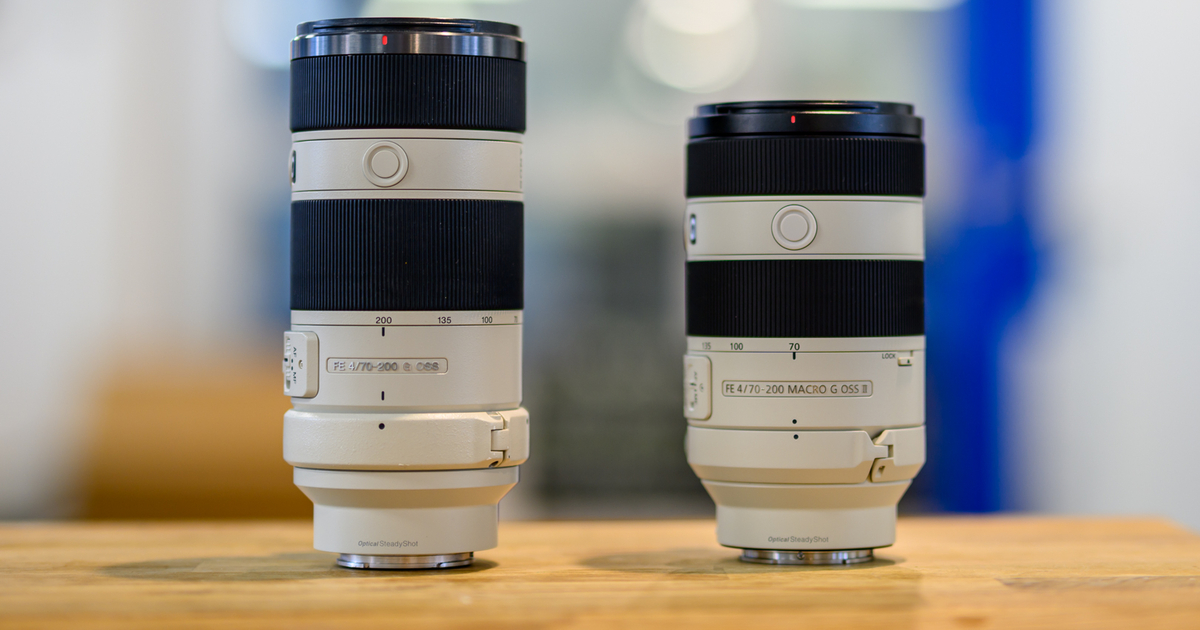A big decade and more than 70 optics later
Sony has been in the mirrorless camera market for over a decade. The E mount, first intended for APS-C sensor boxes, was quickly used for devices with a larger 24×36 sensor. After all these years, the fleet of devices has continued to grow, as well as the optical catalog which now reaches more than 70 pebbles. Some are almost as old as the mount and Sony, in addition to complete new features, strives to renew lenses, like the FE 70-200 F4 G OSS II zoom.
Version 2 facing the first FE 70-200 F4 G OSS
Having the previous model in our stock, the FE 70-200 F4 G OSS, we wanted to compare the two lenses. We have limited our comment here to the widest focal length, the 70mm, which in both cases is the best in terms of sharpness.
The gap between the two versions is really noticeable from the full f/4 aperture. While the new model offers a more than adequate level of sharpness from f/4, the old model is much less sharp. Thereafter, version 2 reaches its maximum sharpness quickly at f/5.6 and we arrive at really good levels. We are still far from the very best fixed focal lengths that Sony has produced, such as the FE 50mm F1.4 GM, but the quality is there.
For its part, with the FE 70-200 F4 G OSS we have to wait f/8 for it to give its best. It is then a very reasonable dive, but equivalent to the new version at f/8. What’s more, it betrays a somewhat dated optical design inherited from SLRs, where it was common to close the diaphragm by two or three stops before having a good level of sharpness. This made the brightest focal lengths (f/1.2, f/1.4, etc.) almost blurry at full aperture. And for zooms that are not very open, like our friend here, it was necessary to give up on its use as soon as the Sun was not at its zenith.
A clear advantage to the new model
Moreover, we can clearly see the difference in sharpness with our extracts from the scene at the widest f/4 aperture. Being generous, we would say that the 2014 model offers a very smooth rendering, which some videographers might like. But the contrast is striking and it’s always easier to make an image less sharp than to artificially increase sharpness.
While our tests were carried out at the same time, under the same lighting and with the same camera (Sony A7R V), the colorimetric rendering differs a little. The image of version 1 leans more towards the reds. Here too, we see Sony’s choice in terms of color rendering over the decade.
Sony Continuity Champion
During our test of the FE 24-70mm F2.8 GM II, we noticed the proximity between the 70 mm values of this lens and the FE 70-200mm F2.8 GM II zoom, the curve being then very similar. The same was true between the 24mm values with the zoom and the FE 12-14mm F2.8 GM, underlining the great homogeneity of the work of the Sony opticians with their lenses.
This observation can also be made between the 70 mm values of the FE 70-200mm F4 G OSS II and the trans-standard FE 20-70mm F4 G, launched at the start of 2023. If the values undergo very slight variations, we can observe a level fairly similar sharpness and a curve that takes the same direction, nice work.
For more information on the FE 70-200mm F4 G OSS II zoom, we invite you to consult the complete test that we have devoted to it.
